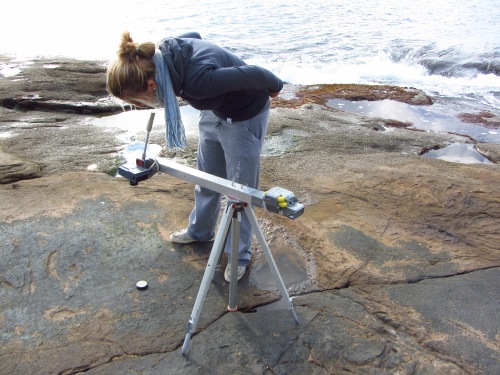Updated: 25/04/2025
Ecologists strive to understand the causes of the observed variability in population abundance and distribution. 1/f noise models and multifractals provide complementary conceptual and analytical frameworks to characterise variability in temporal and spatial series of environmental and ecological data. In our paper, “Multifractal spatial distribution of epilithic microphytobenthos on a Mediterranean rocky shore”, we combined these techniques to investigate the spatial distribution of epilithic microphytobenthos (EMPB) forming biofilms on rocky intertidal surfaces.
Marine biofilms, which mainly consist of photosynthetic organisms (diatoms, cyanobacteria and spores of macroalgae) embedded in a polysaccharide matrix, are important but almost neglected components of rocky intertidal habitats. Indeed, they substantially contribute to coastal primary productivity, provide food for grazing gastropods and facilitate the settlement of algal propagules and larvae of sessile invertebrates. Previous studies investigating the spatial distribution of soft bottom biofilms and periphyton communities highlighted that these microscopic organisms form complex multifractal spatial structures. On the bases of these results we hypothesized that power laws and multifractals could best describe the spatial distribution of rocky intertidal biofilms. We tested this hypothesis applying spectral analysis and multifractal geometry to nearly-continuous EMPB biomass data, obtained from calibrated colour-infrared images.
Our results support the hypothesis that 1/f noise spatial patterns are also multifractal. We interpreted these findings from two different but not mutually exclusive perspectives: either as the result of the superimposition of several biotic and abiotic processes acting at multiple spatial scales or as the hallmark of self-organization. Both interpretations stress the importance of local biotic interactions, either positive or negative, in shaping spatial pattern of distribution of EMPB biomass, while differing in the way environmental processes are supposed to affect microalgal abundance. The first interpretation is that environmental processes associated with temperature, insolation and moisture exert a direct effect on EMPB. Conversely, under self-organization, the influence of these abiotic variables is indirect, being mediated by the presence of the polysaccharide matrix in which microalgal cells are embedded.
Martina Del Bello


